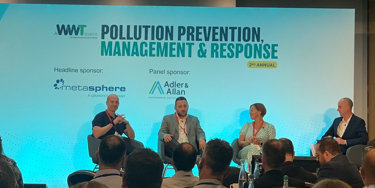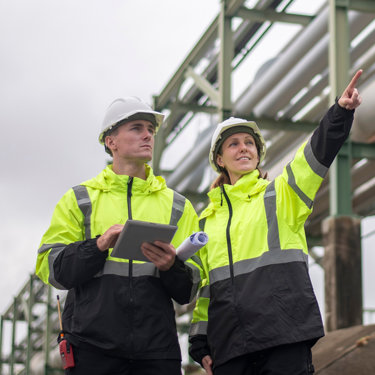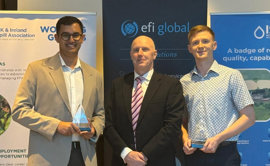Understanding what’s being asked of the water industry in AMP8: Are we investing in the right way to tackle the problem?
Published: 3 July 2024
As the water industry gears up for the eighth Asset Management Period (AMP8), commencing in April 2025, the sector faces unprecedented scrutiny and pressure with stringent targets and environmental mandates are driving the agenda.
At the recent WWT Pollution Prevention, Management & Response Conference, Mike Williamson (Managing Director, Water Division) took part in a panel discussion to address the question of whether we are investing in the right way to tackle these challenges effectively.
Here’s an in-depth look at the key investment priorities, challenges, and potential improvements for the water industry in AMP8.

Prioritising investment in pollution: A strategic approach
Investment in pollution control within the water industry is multifaceted, with a distinct focus on combined sewer overflows (CSOs) and broader pollution issues. CSOs have been prioritised based on their potential environmental harm. The Department for Environment, Food & Rural Affairs (DEFRA) has set stringent targets for CSOs, requiring those near bathing waters to meet new standards by 2030, followed by high-priority sites such as Sites of Special Scientific Interest (SSSIs) by 2045. Water companies will need to optimise their programs to deliver the greatest environmental benefit while balancing the impact on customer bills.
Broader pollution investments are geared towards addressing the root causes of failures, such as asset and power failures or hydraulic overloads. Enhancing the speed of detection, response, and recovery is also critical to limit environmental impacts. Performance commitments set by Ofwat and the Environmental Performance Assessment produced by the Environment Agency (EA) incentivise companies to reduce pollution incidents.
Improving investment structures: The BATNEEC approach
To prevent increased costs from being absorbed into customer bills, the water industry can explore the Best Available Technology Not Exceeding Excessive Cost (BATNEEC) approach.
Surface water separation, for instance, plays a crucial role in limiting CSO impact. Ensuring that new developments employ Sustainable Drainage Systems (SuDS) and using porous materials in paved areas can help avoid additional costs to customers.
A BATNEEC Cost Benefit Assessment is part of the framework for CSOs, but there is no requirement to update assessments as costs or benefits change. This is particularly relevant as the industry adopts more green infrastructure approaches, which may reduce costs over time. Regular updates to these assessments could better reflect the evolving economic landscape and technological advancements, ensuring investments remain cost-effective.
Addressing overshadowed issues: A holistic pollution reduction strategy
While water company CSOs generate significant attention, they represent only part of the pollution issue. Agricultural activities and rural land management, along with the activity in urban and transport must also be considered. Focusing solely on the water company CSOs addresses part of the pollution problem.
Expanding efforts to address non-point sources of pollution, such as agriculture, is crucial. Water companies are actively working with farmers to reduce nitrogen and phosphorus usage. Additionally, the industry must tackle unpermitted pollution incidents, which remain static despite efforts. Good asset management practices, ensuring timely investment in critical assets, are essential to reducing pollution risks.
Building a skilled workforce for the future
Meeting the challenges posed by the 2021 Environment Act will require a significant expansion of the workforce. An estimated 63,000 additional workers will be needed by 2027. However, many companies struggle to recruit talent, with only 8% of the workforce under 24 and 20% nearing retirement. Workforce diversity is also below average.
To address this, the industry must continue to grow graduate schemes and apprenticeships, recognising the significant opportunities for talented individuals to drive societal benefits. Attracting young and diverse talent will be key to meeting future challenges and ensuring sustainable growth.
Crucially there must be more investment in technology and innovation along with some bold, brave, national solution options. There is likely to be a lack of skilled, competent workers and, considering the effort and activity, there has to be a question of affordability. The application of technology would reduce people OpEx costs over time.
Regional specificity and data-driven approaches
While CSO guidelines focus on environmental and human harm, taking into account regional geology and tailoring plans to specific circumstances and customer preferences is essential. Each region and company face unique challenges, necessitating individualised strategies.
Data-driven approaches are already transforming the industry, with real-time monitoring of over 14,000 CSOs and live performance information available to customers. Sewer level monitoring and enhanced in-watercourse environmental performance monitoring will further improve the assessment of potential environmental harm and enable better planning.
Source-control remains the preferred strategy for pollution prevention. Engaging with agriculture to reduce non-point source pollution and collaborating with planning authorities on surface water management are vital for improving waterbody health.
CSOs and ecological impact
Water companies have different approaches to measurement, with some favouring extensive benthic macroinvertebrate (MI) surveys upstream and downstream of each CSO to rank its environmental (ecological) impact. This ranking in then used to prioritise investment and tackle the most environmentally impactful CSOs first. Other WaSCs are prioritising CSOs based on spill frequency (within the high-priority site framework detailed above).
There is a place for MI surveys to assess environmental impact and prioritise investment. Repeating surveys following improvement works demonstrates benefits to stakeholders and ensures the greatest value.
The Government promotes managing harm (understanding the impact of spills on the environment and targeting a program accordingly). Ofwat guidance is to manage spills and reduce the number of wastewater releases, regardless of impact.
Conclusion
As AMP8 approaches, the water industry stands at a critical juncture. Prioritising investments in the right areas, adopting cost-effective technologies, expanding focus beyond CSOs, building a skilled workforce, and leveraging data-driven strategies are essential steps.
By addressing these challenges head-on, the industry can ensure a sustainable and environmentally responsible future while balancing the financial impact on customers.
More from our Knowledge Hub
Environmental compliance today, creating a sustainable tomorrow
Helping you reduce risk to the environment and your operation by managing assets compliantly while achieving commercial, ESG, and net-zero goals.
Contact our experts




